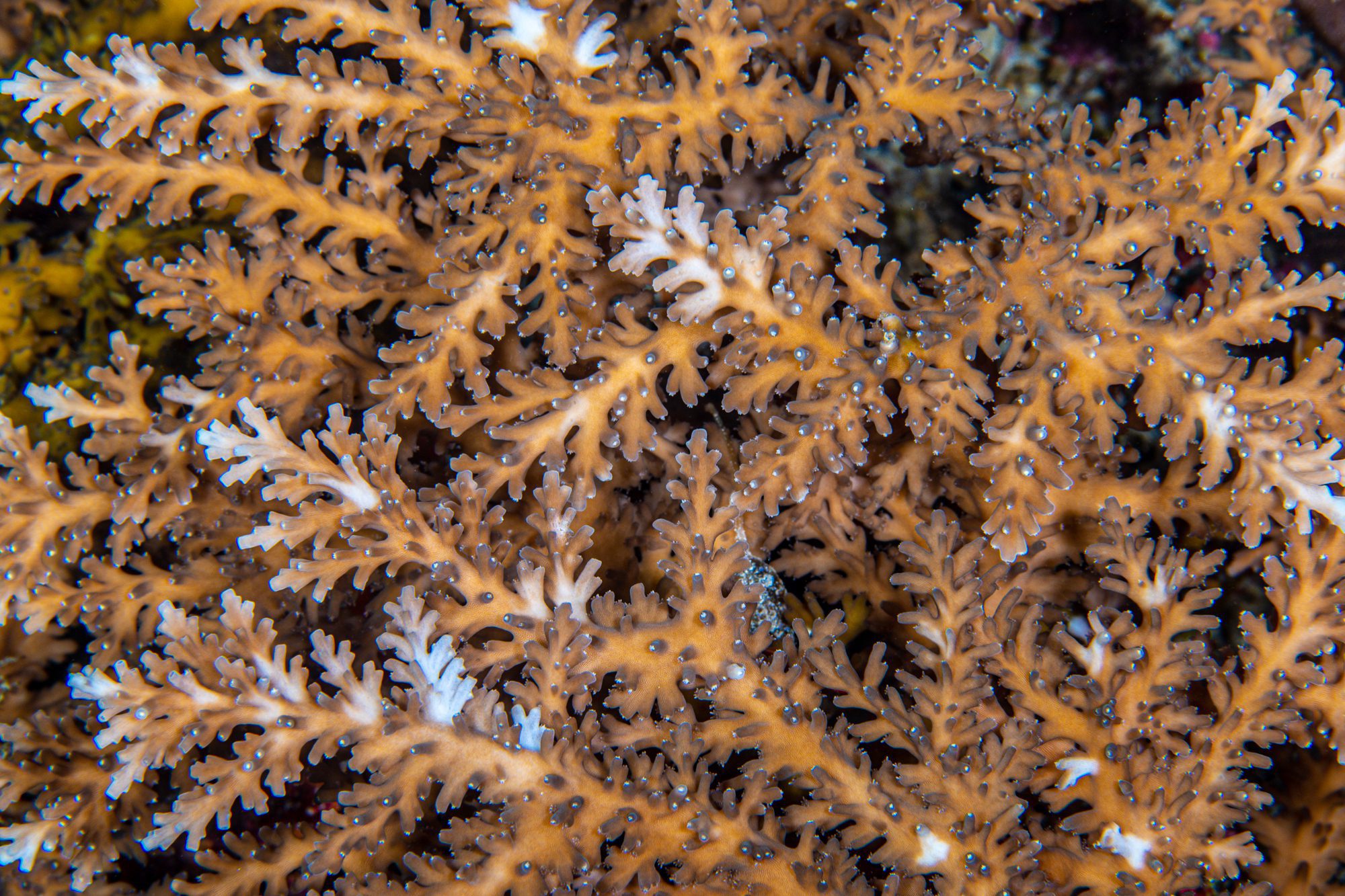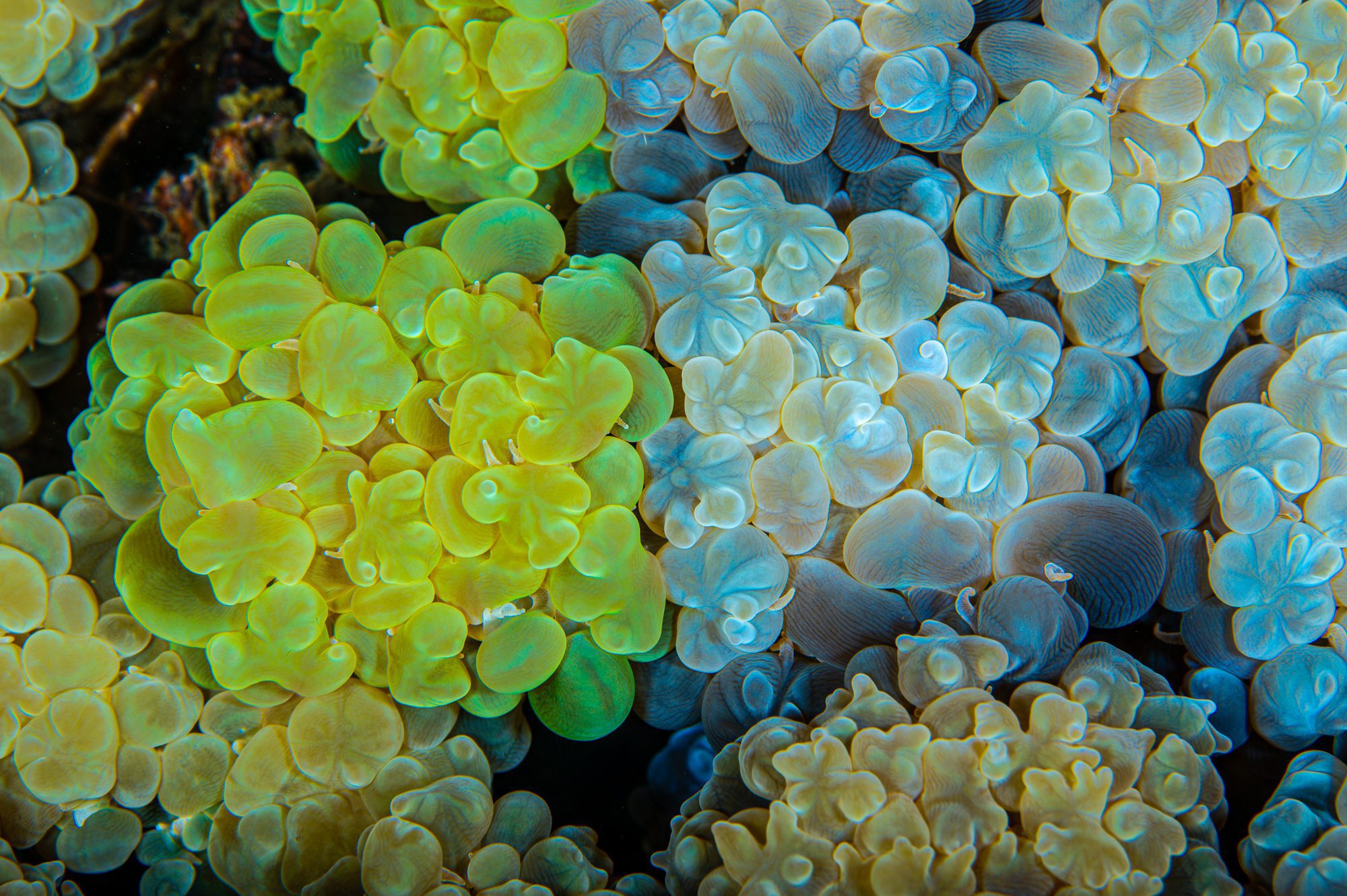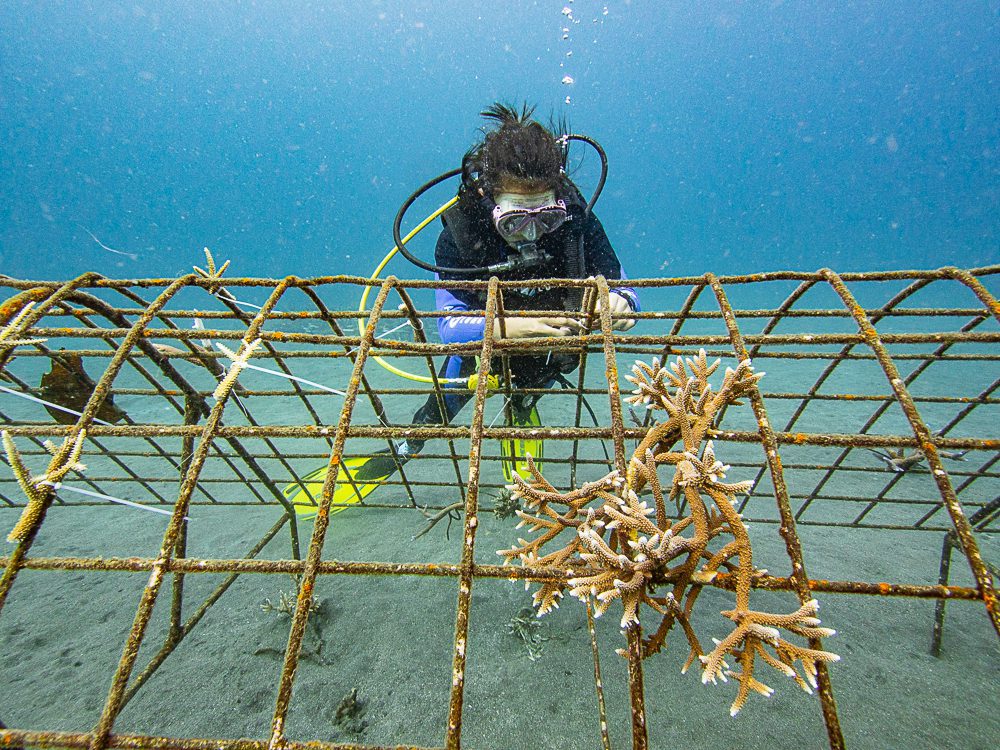3 Differences Between Hard and Soft Corals
|December 28, 2022
It may seem simple enough, one is soft and one is hard, but can you really spot the difference between these two distinct groups of coral just by looking? In this Blog we look at the differences between hard and soft corals and how to accurately gauge which category a coral falls under, by sight, while diving.
Before we start, it’s important to remember that coral is not a plant, it is an animal and like many marine species, corals should not be touched. Not only can some corals deliver a nasty sting, but human touch also negatively impacts the coral animal itself.
#1. Coral Skeletons and Structures
The biggest difference, as the name implies, is that hard-coral polyps form hard, calcium carbonate skeletons – externally. This gives them a hard outer, stone-like casing. Soft corals, however, are held together by a jelly-like mesoglea and rigid, spiny structures called sclerites hold together soft coral polyps.

#2. Coral Polyps
Hexagonal or Octagonal? The beautiful flower-like patterns that you see when you look closely at coral is not just mere decoration. It’s actually the easiest way of classifying whether a coral is of the soft or hard coral variety. Hard coral polyps are built on a six-fold symmetry, while soft coral polyps are built on an eight-fold symmetry. Next time you are diving at Murex Bangka take a closer look at the soft-coral polyps and you’ll see there are eight tentacles (Sahoung is a great dive site for examining soft corals). Because the hard calcium carbonate sclerites are held internally in soft corals, if you look closely at some of the more translucent soft coral species, it’s possible to identify these too.
If you are diving at Murex Manado then sites such as Lekuan and Fukui have stunning hard coral formations – take a closer look and you’ll see that the polyps are formed in multiples of six.

#3. Coral Defence Mechanisms
Defence! Just like any other marine species, corals also need to be able to defend themselves against predators. Soft and hard corals have very different defence mechanisms in place.
Soft coral polyps are essentially not much different to tiny jelly-like sea anemones and if left alone on the reef they would be extremely vulnerable to multiple predators. In order to defend themselves from predation, soft corals produce a broad range of chemicals to repel predators. There are however some nudibranch and sea snails that are still able to feed on the soft coral tissue despite this chemical mechanism.
It’s not only marine life that soft corals need to protect themselves from. They also need to protect their territory on the reef and their chemical driven defence can deter other coral species from getting close enough to ‘invade’.
Did you know that the chemicals produced by soft corals are incredibly complex and have even been (and continue to be) studied for medical purposes?
Hard corals have developed a much more obvious form of defence through their ability to build a hard calcium carbonate skeleton around their bodies for protection. It is this hard skeleton that builds up to form coral reefs – this is why hard corals are also known as ‘reef-building’ corals.
When hard corals detect the presence of predators, the hard coral polyps are able to retract inside the exoskeleton for protection. Once the polyp is inside, fish or other predators can only nip at the outer skeleton and any fleshy tissue covering the surface of the coral.

Murex Bangka Coral Nursery
For anyone who is interested in corals and learning more about them, we recommend joining us for a dive (or snorkel) at our coral nursery at Murex Bangka. The nursery houses several metal frames on which small coral fragments are attached to give stability and therefore the chance to grow into larger healthy corals. Once the corals are of a sustainable size they are transplanted onto areas of reef that have suffered from storm, wave or even boat or fishing net damage.
Are you planning your next dive trip?
The next time you go scuba diving, why not try to spot the difference between hard and soft corals during your dive? Once you start paying more attention to the corals around you, you’ll be amazed by the amount of detailed patterning on them. They are truly beautiful, intricate and coral spotting becomes addictive!

Learn More with Murex Resorts and Ocean Gardener
If you would like to learn more about the lives of corals, we are proud to offer coral courses in partnership with Ocean Gardener. There are two levels to choose from, the Discover Coral Diving course for those who would like an introduction to corals, or the Ocean Gardener Certification Course for those who prefer a more in depth learning experience. Both courses can include the opportunity to dive on one of our coral nurseries and are a lot of fun! Contact us for more information at: reservations@murexresorts.com.
The post 3 Differences Between Hard and Soft Corals appeared first on Murex Resorts.